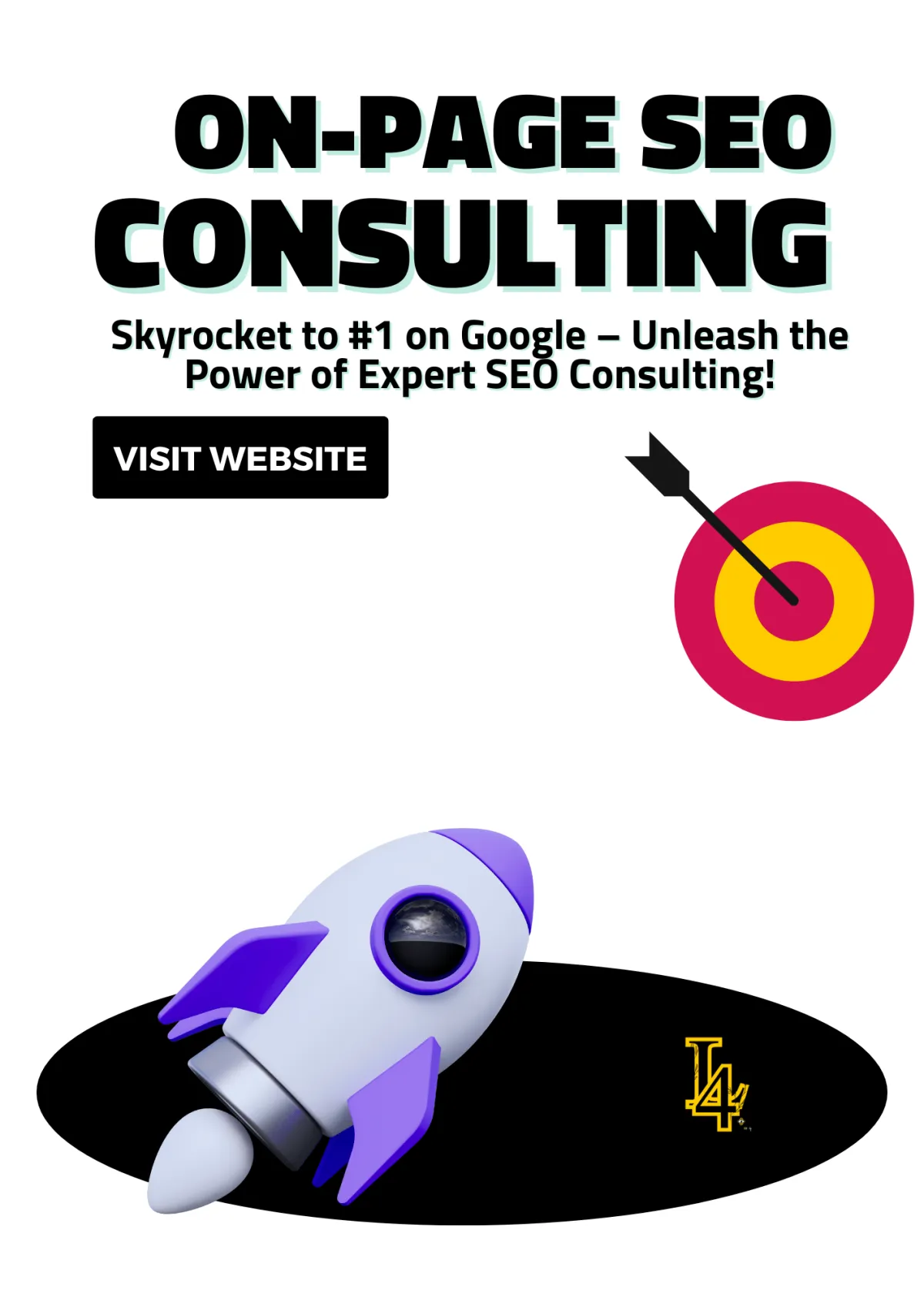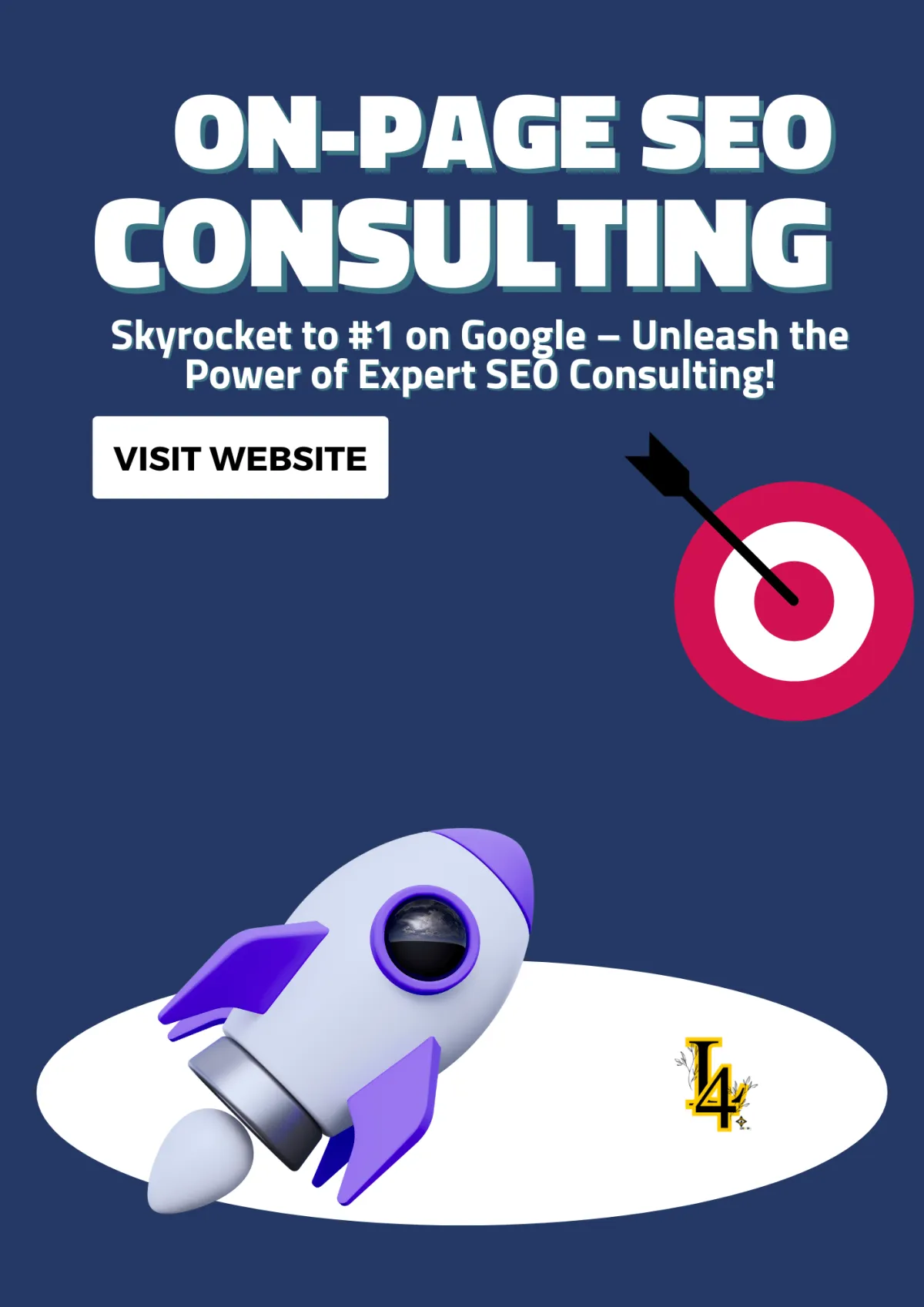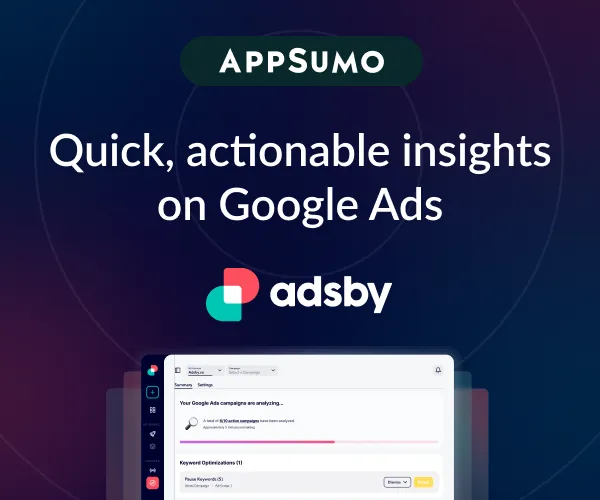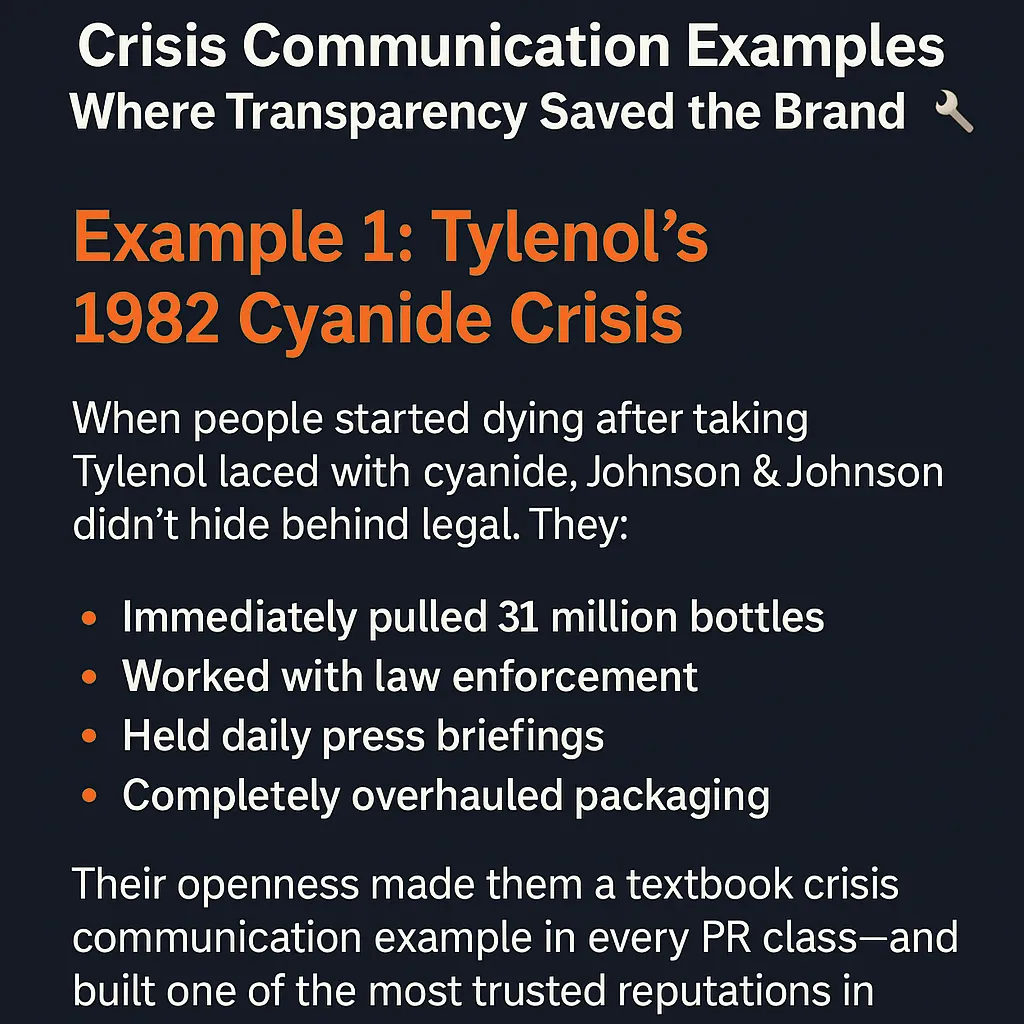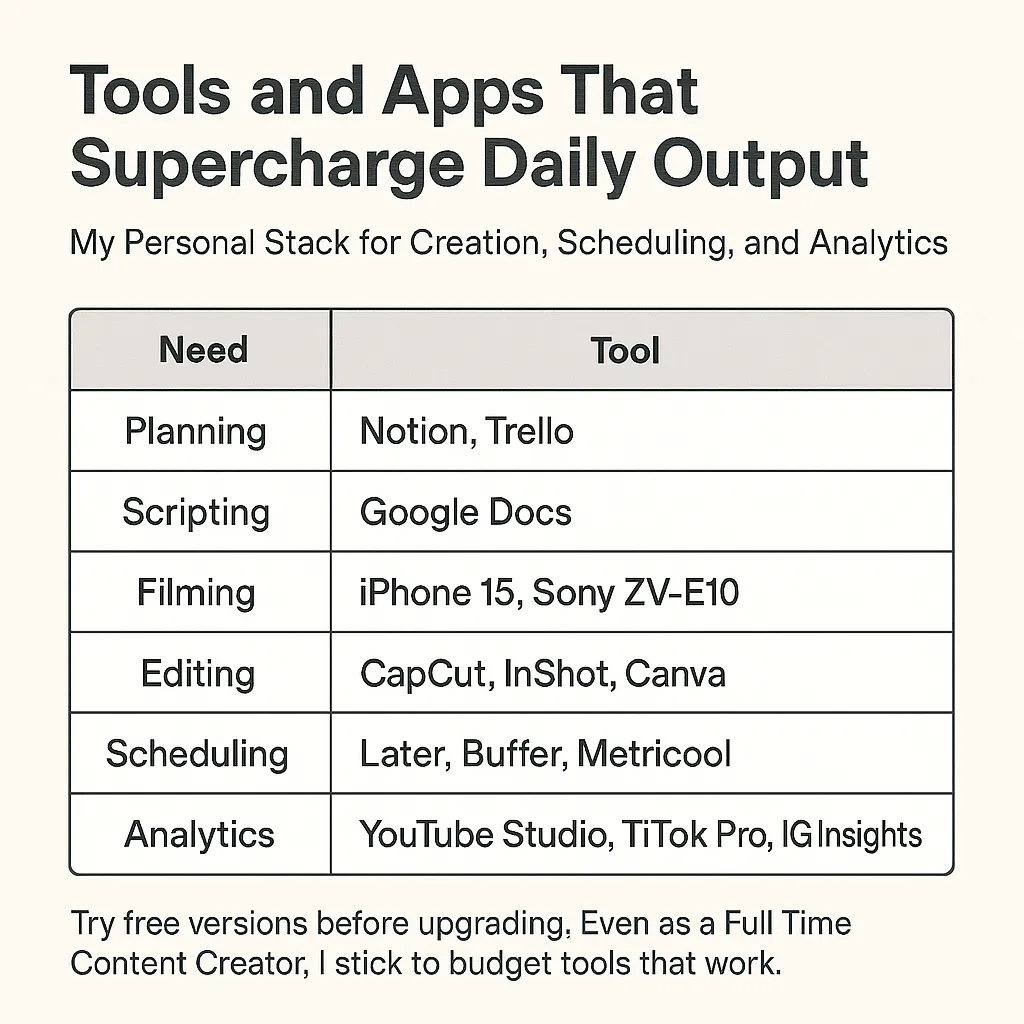
Master SEO with Topic Clusters: The Ultimate Guide to Boost Rankings
Master SEO with Topic Clusters: The Ultimate Guide to Boost Rankings
How to Create Topic Clusters for Your Website
1. Understand the Concept of Topic Clusters
2. Choose a Core Topic for Your Pillar Page
Criteria for Choosing a Core Topic
How to Identify the Right Core Topic
Pro Tips for Refining Your Core Topic
3. Identify Subtopics for Cluster Content
Criteria for Selecting Subtopics
How to Identify Relevant Subtopics
Examples of Subtopics for Common Pillar Topics
Benefits of Thoughtful Subtopics
4. Mapping Out My Content Structure
How I Organized My Content Structure
Why This Structure Works for Me
5. Creating High-Quality Pillar and Cluster Content
How I Approach Pillar and Cluster Content
Pillar Page: The Cornerstone of My Topic Cluster
Cluster Pages: Deep Dives into Subtopics
Key Principles for High-Quality Content
Why This Step is Non-Negotiable
6. Link Strategically Between Pages
1. Link From the Pillar Page to Each Cluster Page
2. Link From Each Cluster Page Back to the Pillar Page
3. Include Contextual Links Between Related Cluster Pages
Tools I Use to Simplify This Process
7. Optimize and Update Regularly
1. Regularly Update Content with Fresh Data and Trends
2. Monitor Performance with Analytics
How to Create Topic Clusters for Your Website
Topic clusters are an effective content strategy to improve your website's SEO and provide a better user experience. Here’s a step-by-step guide to creating them:
1. Understand the Concept of Topic Clusters
A topic cluster is an advanced content strategy that organizes your website’s content into an interconnected network, which improves both search engine optimization (SEO) and user engagement. This method is highly effective because it mirrors how search engines like Google evaluate the relevance and authority of a website.
Three Main Components Of Topic Cluster
Pillar Content
Pillar content is the foundation of the topic cluster. It’s a long-form, comprehensive, and authoritative page that broadly covers a specific topic in depth. The goal of the pillar page is to provide readers with a high-level overview while linking to more detailed subtopics (cluster content). A strong pillar page often ranks for competitive keywords because it serves as a central resource.
Cluster Content
Cluster content consists of individual blog posts or web pages that focus on narrow subtopics related to the pillar content. These pieces answer specific questions, provide actionable insights, or explore niche aspects of the broader topic. Each piece of cluster content should be optimized for relevant keywords and provide unique value to the audience.
Internal Links
Internal linking ties the cluster together, creating a logical hierarchy for search engines and improving the user experience. Each cluster page links back to the pillar page, signaling its authority as the primary resource for the topic. Additionally, links between cluster pages further strengthen the interconnected structure of the topic cluster.
Examples of Topic Clusters
To better understand topic clusters, here are three examples:
Example 1: Digital Marketing
Pillar Page: "Ultimate Guide to Digital Marketing"
Cluster Content:
"SEO Basics: A Beginner’s Guide to Search Engine Optimization"
"Content Marketing Strategies to Grow Your Business"
"How to Run Successful Social Media Advertising Campaigns"
This topic cluster uses semantic keywords like "digital marketing strategies," "online marketing tips," and "improving brand visibility." These terms help search engines understand the relationship between the pillar and cluster pages.
Example 2: Personal Finance
Pillar Page: "Comprehensive Guide to Personal Finance Management"
Cluster Content:
"How to Create a Monthly Budget"
"Best Investment Strategies for Beginners"
"Tips for Paying Off Debt Quickly"
In this cluster, related keywords like "budget planning," "debt repayment tips," and "financial independence strategies" help rank both the pillar and cluster pages for multiple queries.
Example 3: Home Gardening
Pillar Page: "How to Start and Maintain a Home Garden"
Cluster Content:
"How to Start a Vegetable Garden in Your Backyard"
"Top 10 Tools Every Gardener Needs"
"Organic Gardening: Tips and Techniques for Beginners"
Semantic keywords like "gardening for beginners," "organic soil preparation," and "homegrown vegetables" make the content more discoverable and relevant to search queries.
Benefits of Topic Clusters
The topic cluster model offers several advantages for website owners and marketers:
1. Boosts SEO Performance
Search engines prioritize websites that demonstrate topical authority. By creating topic clusters, you signal to Google that your site covers a subject comprehensively. The interconnected internal linking improves crawlability, enabling search engines to understand the context and hierarchy of your content. As a result, both the pillar page and cluster pages can rank higher for their respective keywords.
2. Enhances User Experience
When visitors land on your website, they often seek comprehensive answers. A well-organized topic cluster guides users from a high-level overview (pillar content) to detailed, actionable information (cluster content). The internal linking also reduces bounce rates by encouraging users to explore more pages.
3. Expands Keyword Reach
A single pillar page may focus on high-competition keywords, but the cluster content allows you to target long-tail and semantic keywords. For example, a pillar page on "digital marketing" can rank for competitive terms, while cluster pages like "SEO tips for small businesses" or "how to use Instagram ads" capture less competitive, highly specific searches.
4. Builds Authority
By covering a subject thoroughly, your website becomes a go-to resource for users and search engines alike. Visitors are more likely to bookmark your site, share your content, or return for further information, enhancing your site’s credibility.
2. Choose a Core Topic for Your Pillar Page
Selecting the right core topic for your pillar page is a critical step in building an effective topic cluster. The core topic serves as the foundation for your cluster and needs to align with both your audience’s needs and your website’s overall purpose. A well-chosen topic ensures that your content strategy is focused, effective, and capable of driving meaningful traffic.
Criteria for Choosing a Core Topic
Relevance to Your Audience
The topic should directly address the needs, interests, or challenges of your target audience. Consider what your audience is searching for and how your expertise can provide value.
Example: If your website focuses on health and wellness, a core topic like "Healthy Eating Habits" is likely to resonate with your audience.
High Search Volume and Interest
Your core topic should have substantial search volume to ensure it attracts enough traffic. Use keyword research tools to validate the popularity of your chosen topic and gauge its competition.
Example: A topic like "Digital Marketing Strategies" typically has high search volume, making it a strong candidate for a marketing-focused website.
Potential for Multiple Subtopics
A good core topic is broad enough to allow for a variety of related subtopics (cluster content). This flexibility ensures you can build a robust network of interconnected pages that support the pillar page.
Example: The topic "Personal Finance" can branch into subtopics like "Budgeting Tips," "Saving for Retirement," and "Debt Management Strategies."
How to Identify the Right Core Topic
Use these steps to find a topic that meets the above criteria:
Leverage Keyword Research Tools
Tools like Google Keyword Planner, SEMrush, Ahrefs, or Ubersuggest can help you discover broad, high-volume topics.
Search for seed keywords related to your niche and look for topics with strong search interest but manageable competition.
Analyze Competitor Content
Identify successful pillar pages on competitor websites. Tools like Ahrefs’ Content Gap or SEMrush’s Competitive Analysis can help you uncover popular topics in your industry.
Example: If a competitor ranks well for "Introduction to Social Media Marketing," you might create a pillar page on a similar topic but with a unique angle.
Explore Audience Interests
Use platforms like Reddit, Quora, or social media groups to find out what questions or problems your audience is discussing.
Example: If people in a fitness forum frequently ask about "Meal Prepping for Beginners," this could serve as an excellent core topic for a fitness website.
Consider Long-Term Relevance
Select evergreen topics that remain relevant over time. This ensures your pillar page continues to attract traffic and support your topic cluster in the long run.
Examples of Core Topics
For a Marketing Website:
Core Topic: "Content Marketing"
Why It Works: High search volume, broad relevance, and potential subtopics like "How to Write SEO Blog Posts," "Creating a Content Calendar," and "Video Marketing Tips."
For a Fitness Website:
Core Topic: "Home Workouts"
Why It Works: Relevant to fitness enthusiasts, allows for subtopics like "Bodyweight Exercises," "Best Equipment for Home Gyms," and "30-Minute Workouts for Busy Professionals."
For a Tech Blog:
Core Topic: "Artificial Intelligence in Business"
Why It Works: Broad appeal in the tech industry, with subtopics like "AI Tools for Small Businesses," "How AI Improves Customer Experience," and "Ethical Considerations in AI."
Pro Tips for Refining Your Core Topic
Combine Keywords and User Intent: Focus on not just what people search for but also why they search for it. This ensures your core topic aligns with their intent.
Example: Instead of "SEO Tips," consider "SEO Tips for Small Businesses" to narrow the focus and better meet user needs.
Check Trends and Seasonality: Use tools like Google Trends to ensure your topic is consistently popular or growing in interest.
Ensure Topic Uniqueness: Research existing content on your chosen topic. If it’s oversaturated, find a unique angle or add more value to differentiate your content.
3. Identify Subtopics for Cluster Content
Once you’ve chosen your core topic, the next step is to identify related subtopics that will serve as cluster content. These subtopics should address specific questions, needs, or challenges that your audience faces. Subtopics play a crucial role in fleshing out your topic cluster and providing valuable, targeted content that complements your pillar page.
Criteria for Selecting Subtopics
Address Specific Questions or Needs
Each subtopic should focus on solving a particular problem or answering a specific query within the scope of your pillar topic.
Example: For a pillar topic on "Personal Finance," a relevant subtopic might be "How to Build an Emergency Fund."
Have Lower Competition
Subtopics with lower competition are easier to rank for and help your content gain traction more quickly. Use long-tail keywords to refine your focus and target niche areas.
Example: Instead of "Gardening Tips," try "Gardening Tips for Small Spaces."
Be Diverse but Complementary
Ensure that subtopics are distinct yet interconnected. They should expand on different aspects of the core topic, offering a well-rounded perspective.
Example: For a pillar page on "Digital Marketing," include subtopics like "SEO Basics," "Social Media Trends," and "Email Marketing Best Practices."
How to Identify Relevant Subtopics
Use Keyword Research Tools
Tools like Ahrefs, SEMrush, and AnswerThePublic can help identify specific keywords and common questions within your niche.
Example: Enter "Home Gardening" in the tool and analyze results like "Indoor Gardening for Beginners" or "Composting 101."
Analyze Audience Pain Points
Research forums, social media platforms, and Q&A sites like Quora or Reddit to uncover what questions your audience is asking.
Example: If users frequently ask, "What are the easiest vegetables to grow at home?" you can create a subtopic around this.
Evaluate Content Gaps
Look at competitor content to identify areas they haven’t covered or where their content is lacking detail. These gaps can guide your subtopic selection.
Examples of Subtopics for Common Pillar Topics
Pillar Topic: Digital Marketing
Subtopics:
"How to Conduct Keyword Research for SEO"
"Top Social Media Trends for 2023"
"The Benefits of Email Marketing for Small Businesses"
Why These Work: They address specific challenges marketers face while staying relevant to the broader topic.
Pillar Topic: Personal Finance
Subtopics:
"How to Save for a Down Payment on a Home"
"Beginner’s Guide to Investing in the Stock Market"
"Budgeting Tips for Freelancers"
Why These Work: They tackle focused financial concerns that appeal to diverse segments of your audience.
Pillar Topic: Home Gardening
Subtopics:
"How to Grow Herbs in Your Kitchen"
"Best Fertilizers for Organic Gardening"
"Top Plants for Beginners: Low-Maintenance Options"
Why These Work: They provide actionable insights for different aspects of gardening, ensuring relevance for a wide range of users.
Tips for Developing Subtopics
Focus on Long-Tail Keywords
Use long-tail keywords to narrow your focus and attract a highly targeted audience.
Example: Instead of "Social Media Marketing," try "How to Use Instagram Stories for Brand Engagement."
Leverage Search Intent
Match your subtopics to the specific intent behind user queries:
Informational Intent: "What is Composting?"
Navigational Intent: "Best Gardening Tools Reviews"
Transactional Intent: "Where to Buy Organic Gardening Supplies"
Cover Different Angles
Include how-to guides, product comparisons, beginner tips, and expert-level insights to cater to various audience segments.
Example: For "Fitness Training," subtopics could range from "Best Home Workout Equipment" to "How to Recover After a Workout."
Align Subtopics with Your Business Goals
Ensure each subtopic drives your audience closer to engaging with your services, purchasing your products, or becoming loyal followers.
Benefits of Thoughtful Subtopics
Broader Keyword Coverage
Subtopics allow you to target a wide range of keywords, increasing your website’s visibility across search engines.
Deeper Audience Engagement
Providing specific, actionable content tailored to audience questions increases time spent on your site and builds trust.
Authority Building
Covering a variety of subtopics comprehensively signals to search engines that your site is a reliable resource on the core topic.
4. Mapping Out My Content Structure
At this stage, I’ve already chosen my core topic, brainstormed related subtopics, and gained a clear understanding of how everything connects. Now it’s time to map out my content structure to visualize and organize my topic cluster effectively.
To do this, I place my pillar page at the center of my structure, as it’s the primary resource that ties everything together. Surrounding it are the cluster content pages, each focusing on specific subtopics. These cluster pages link back to the pillar page and, where relevant, to each other, creating a strong, interconnected network.
How I Organized My Content Structure
Here’s how I approached it:
Pillar Page at the Center
I started by placing my core topic, "How to Create a Personal Budget," as the main focus. This page will provide an overarching guide to budgeting and link to the cluster pages for more detailed information.
Cluster Content Pages Around It
Around the pillar page, I mapped out the following cluster topics:
"How to Track Your Monthly Expenses"
"The 50/30/20 Budgeting Rule Explained"
"How to Save for Emergencies on a Tight Income"
"Top Budgeting Apps for Beginners"
"Common Budgeting Mistakes and How to Avoid Them"
Linking Strategy
Each cluster page includes links back to the pillar page, reinforcing the main topic’s authority.
I also created contextual links between certain cluster pages. For example:
The "Top Budgeting Apps for Beginners" page links to "How to Track Your Monthly Expenses," as they naturally complement each other.
"Common Budgeting Mistakes" links to "The 50/30/20 Rule" for actionable advice.
How I Visualized My Content
To make this structure easier to manage, I created a visual map. Here’s how I did it:
Using Mind Mapping Tools
I used MindMeister to create a simple, intuitive map. At the center, I placed my pillar page, then branched out the cluster topics, each with its own sub-branches for potential updates or related content.
Alternatively, a tool like Miro could be used for a similar visual layout with added customization features.
Color Coding and Notes
I color-coded the connections: green for links to the pillar page and blue for interlinks between cluster pages. This helped me track the relationships at a glance.
Next to each cluster, I added notes about the primary keyword, target audience, and potential CTAs.
List Format for Simplicity
While the visual map was useful, I also created a linear list as a backup:
Pillar Page: How to Create a Personal Budget
Cluster Page 1: How to Track Your Monthly Expenses
Cluster Page 2: The 50/30/20 Budgeting Rule Explained
Cluster Page 3: How to Save for Emergencies on a Tight Income
Cluster Page 4: Top Budgeting Apps for Beginners
Cluster Page 5: Common Budgeting Mistakes and How to Avoid Them
Why This Structure Works for Me
Mapping out my content structure gave me a clear blueprint for my topic cluster. It ensures that:
My pillar page stays the centerpiece, tying all content together.
Each cluster page adds value and depth without overlapping.
The linking strategy strengthens SEO and provides a seamless user experience.
5. Creating High-Quality Pillar and Cluster Content
From my perspective, the most critical step in building an effective topic cluster is creating high-quality content. Google is getting smarter every day, and it can sense low-value or superficial content. If I cut corners here, all the effort I’ve put into mapping out my structure and selecting subtopics could be wasted. High-quality, meaningful content is what separates a successful website from one that gets buried in search results.
How I Approach Pillar and Cluster Content
Pillar Page: The Cornerstone of My Topic Cluster
The pillar page is the heart of my topic cluster, and I aim to make it the ultimate resource for my core topic. To achieve this, I:
Cover the Topic Comprehensively:
I provide a detailed overview of the core topic, ensuring it answers the "what," "why," and "how" questions comprehensively.
Example: For "How to Create a Personal Budget," my pillar page explains what budgeting is, why it’s important, and step-by-step instructions for building one.
Incorporate Subtopics:
The pillar page introduces each cluster subtopic briefly, with links directing readers to the more detailed cluster pages.
Example: I’ll include a section like, “Tools to Help You Budget,” linking to the cluster page, “Top Budgeting Apps for Beginners.”
Make It Skimmable and Engaging:
I structure the content with headers, bullet points, and short paragraphs to make it easy to navigate.
Visual elements like infographics, step-by-step charts, and videos help explain complex ideas and keep readers engaged.
Cluster Pages: Deep Dives into Subtopics
Each cluster page focuses on a specific subtopic and delivers actionable, relevant content. My strategy includes:
Answering Specific Questions:
I target long-tail keywords to address niche queries related to the pillar topic. These pages aim to be definitive answers to those questions.
Example: For the cluster page “How to Save for Emergencies on a Tight Income,” I break down practical, achievable tips like reducing discretionary spending and automating savings.
Using Natural Keywords:
While I optimize for keywords, I avoid keyword stuffing. Instead, I focus on writing naturally, weaving semantic and related keywords into the content.
Example: Instead of overusing “save money,” I include terms like “emergency fund,” “financial planning,” and “cutting expenses.”
Creating Value:
I prioritize actionable advice and unique insights. Readers should leave with a clear understanding of the topic and practical steps to implement.
Key Principles for High-Quality Content
Informative and Engaging:
My content is well-researched and backed by credible sources. I ensure it’s written in a conversational tone to keep readers engaged.
Visually Rich:
Visuals make content more appealing and help clarify complex ideas. I include:
Infographics: Summarize key points visually.
Videos: Demonstrate processes or explain topics in-depth.
Images and Diagrams: Add context and break up text.
Readable and Accessible:
I format content for readability, using headings, subheadings, and lists. I also ensure accessibility by providing alt text for images and avoiding jargon.
Why This Step is Non-Negotiable
I firmly believe this step—creating high-quality content—is the foundation of everything else. No matter how well-structured my topic cluster is, it won’t succeed if the content doesn’t provide genuine value. Google’s algorithms prioritize user experience, and I know low-value, poorly-written content will get penalized.
By investing in high-quality pillar and cluster content:
My site builds trust and authority with readers and search engines.
Users are more likely to engage, stay longer, and share the content.
I establish my website as a go-to resource, which increases its chances of ranking highly.
6. Link Strategically Between Pages
Let’s be honest—this step can feel tedious and a little boring, but it’s incredibly important for the success of my topic cluster strategy. Internal linking is the glue that holds the whole structure together. Without it, even the best content and organization won’t reach its full potential in terms of SEO or user experience.
Why Internal Linking Matters
Search engines like Google rely on links to understand the relationships between pages on a website. Strategic internal linking:
Helps search engines crawl and index the site more efficiently.
Signals which pages are most important (hint: my pillar page).
Enhances user experience by guiding readers through related content, keeping them on my site longer.
When I approach this step, I think of it as creating a logical, interconnected web of content that benefits both users and search engines.
How I Link Strategically
1. Link From the Pillar Page to Each Cluster Page
This step is straightforward but essential. The pillar page serves as the central hub, so I make sure to:
Include links to all cluster pages within the pillar page content.
Use descriptive anchor text that clearly explains what the linked page is about.
Example: Instead of “click here,” I write, “Learn more about budgeting apps for beginners.”
2. Link From Each Cluster Page Back to the Pillar Page
To reinforce the relationship, I add a prominent link on every cluster page that directs users back to the pillar page. This helps:
Consolidate the authority of the pillar page in Google’s eyes.
Create a seamless navigation experience for users.
For example, at the end of my cluster page, “How to Track Monthly Expenses,” I include a sentence like, “For a complete guide to personal budgeting, check out our comprehensive article on How to Create a Personal Budget.”
3. Include Contextual Links Between Related Cluster Pages
To deepen the interconnection, I link between related cluster pages when it makes sense. These contextual links provide additional value to readers by guiding them to related content.
Example: On the cluster page, “Top Budgeting Apps for Beginners,” I add a link to “How to Track Monthly Expenses,” since both topics complement each other.
Tools I Use to Simplify This Process
Internal linking might feel manual, but tools can help:
Yoast SEO (for WordPress): Highlights internal linking suggestions as I write.
Screaming Frog SEO Spider: Identifies internal link gaps or opportunities.
Link Whisper: Suggests internal links and automates some of the process.
Tips for Effective Linking
Use Natural Anchor Text
I make sure the anchor text flows naturally within the sentence and provides context about the linked page.
Example: “Learn how to set aside funds for emergencies in our guide on saving for emergencies.”
Don’t Overdo It
While internal links are valuable, I avoid adding too many. Overlinking can clutter the content and confuse readers.
Regularly Audit Links
I periodically check that all links work properly and update them if necessary. Broken links can hurt both user experience and SEO.
Why This Step Matters
Even though linking can feel like a chore, I know it’s worth the effort. Without strong internal links:
My topic cluster won’t function as intended.
Search engines might not recognize the relationships between my pages.
Readers might leave without exploring other valuable content I’ve created.
By taking the time to link strategically, I’m ensuring my content works together to boost my SEO performance and keep visitors engaged. It might not be the most exciting part of the process, but it’s one of the most rewarding when I see my rankings and traffic improve!
7. Optimize and Update Regularly
Creating topic clusters is just the beginning. To truly maximize their impact, I need to commit to keeping the content fresh, relevant, and engaging over time. SEO is not a "set it and forget it" process—it’s a continuous effort. Regular updates ensure my content stays competitive, maintains its rankings, and continues to meet my audience's needs.
How I Keep My Content Fresh
1. Regularly Update Content with Fresh Data and Trends
Stale content can lead to a drop in rankings and user engagement. To combat this, I:
Add New Data and Examples:
I look for updated statistics, industry trends, or case studies to incorporate into my pillar and cluster pages.
Example: If my pillar page is "The Ultimate Guide to Digital Marketing," I’ll include the latest social media trends or updated tools for 2024.
Expand or Refine Content:
I revisit older pages to see if I can add more depth, clarity, or actionable advice. Sometimes a new subheading or section can breathe life into the content.
Check for Outdated Information:
For example, if a cluster page discusses the “Top Budgeting Apps,” I’ll replace apps that are no longer relevant with new, popular ones.
2. Monitor Performance with Analytics
To prioritize updates, I rely on tools like:
Google Analytics:
Tracks traffic, bounce rates, and user behavior on each page. Pages with high traffic but low engagement may need a refresh to improve their value.
Google Search Console:
Identifies keywords where my content is underperforming or pages with declining impressions and clicks.
SEO Tools:
Tools like SEMrush or Ahrefs help me track backlinks, keyword rankings, and competitors’ updates.
By analyzing performance metrics, I can focus my efforts on the pages that need the most attention.
3. Add New Cluster Content as Needs Evolve
Over time, my audience’s interests and pain points may change. To address this, I:
Expand My Topic Cluster:
I brainstorm and create additional cluster pages that address new questions or trends related to my pillar topic.
Example: If my pillar page is "Home Gardening," and indoor gardening becomes a hot trend, I might add a cluster page like “Best Plants for Indoor Gardening Beginners.”
Repurpose Old Content:
I transform older content into new formats, like infographics, videos, or social media posts, to reach a broader audience.
Scheduling Updates
To make this process manageable, I stick to a schedule:
Quarterly Audit:
Every three months, I review my pillar and cluster pages for accuracy, relevance, and opportunities to improve.
During this audit, I flag pages that are underperforming or have outdated information.
Monthly Content Refresh:
Each month, I pick one or two cluster pages to update with new data, examples, or visuals.
Yearly Overhaul:
Once a year, I perform a deep dive into my pillar page and the most critical cluster pages to ensure they remain comprehensive and authoritative.
Why Optimization is Essential
This step ensures my topic clusters don’t lose momentum over time. Regular updates:
Improve SEO Performance:
Search engines reward fresh, accurate content, which helps maintain or improve rankings.
Meet Changing User Needs:
Keeping content updated ensures it continues to address current audience interests and pain points.
Boost Engagement and Authority:
Updated content shows readers that I’m invested in providing the best, most reliable information.
Benefits of Topic Clusters
Boosts your site’s authority and relevance.
Enhances user experience with well-organized content.
Improves SEO by targeting a wide range of related keywords.
By implementing topic clusters, you’ll create a robust content strategy that drives traffic and establishes your expertise in your niche.
Conclusion: Building Lasting Authority with Topic Clusters
Creating topic clusters is a proven strategy for enhancing your website's SEO, boosting user engagement, and establishing your site as an authoritative resource. By organizing content into pillar pages and supporting cluster content, you create a seamless, interconnected experience for both search engines and users.
This structure not only improves search engine rankings but also guides visitors through comprehensive, valuable information, keeping them engaged and encouraging them to explore more of your content. From selecting the right core topic and identifying subtopics to strategic internal linking and regular content updates, each step strengthens your website's performance.
When executed effectively, topic clusters can:
Increase organic traffic by targeting both competitive and long-tail keywords.
Improve user experience through structured, easily navigable content.
Establish your brand as a trusted authority in your niche.
By continuously refining and expanding your topic clusters, you're investing in a content strategy that delivers long-term SEO benefits and sustained audience growth. Start building your topic clusters today and watch your website's authority and traffic grow exponentially!

